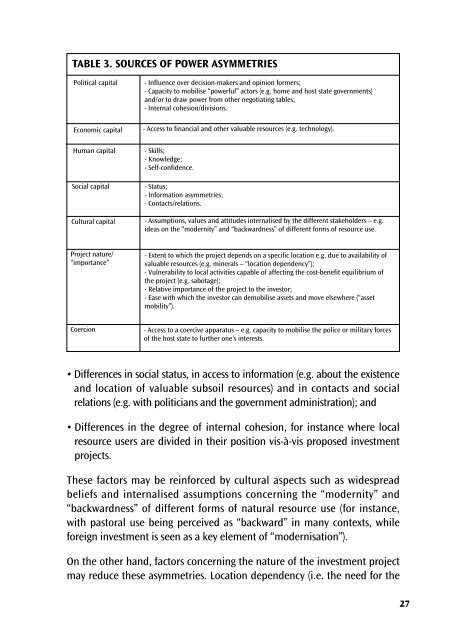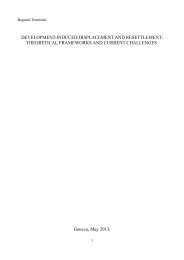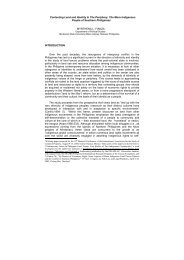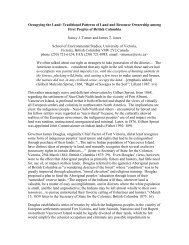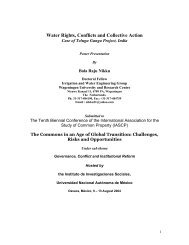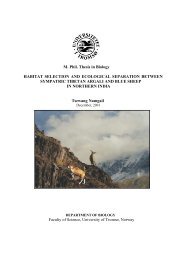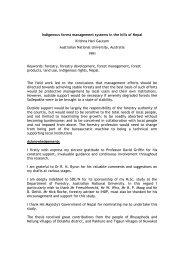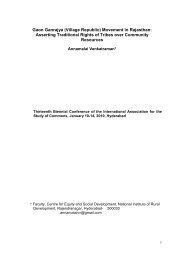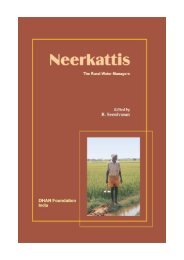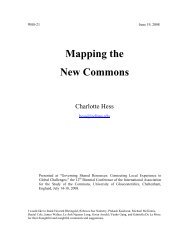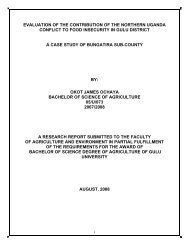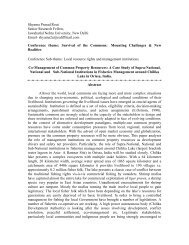Legal empowerment for local resource control
Legal empowerment for local resource control
Legal empowerment for local resource control
Create successful ePaper yourself
Turn your PDF publications into a flip-book with our unique Google optimized e-Paper software.
TABLE 3. SOURCES OF POWER ASYMMETRIES<br />
Political capital<br />
Economic capital<br />
Human capital<br />
Social capital<br />
Cultural capital<br />
Project nature/<br />
“importance”<br />
Coercion<br />
- Influence over decision-makers and opinion <strong>for</strong>mers;<br />
- Capacity to mobilise “powerful” actors (e.g. home and host state governments)<br />
and/or to draw power from other negotiating tables;<br />
- Internal cohesion/divisions.<br />
- Access to financial and other valuable <strong>resource</strong>s (e.g. technology).<br />
- Skills;<br />
- Knowledge;<br />
- Self-confidence.<br />
- Status;<br />
- In<strong>for</strong>mation asymmetries;<br />
- Contacts/relations.<br />
- Assumptions, values and attitudes internalised by the different stakeholders – e.g.<br />
ideas on the “modernity” and “backwardness” of different <strong>for</strong>ms of <strong>resource</strong> use.<br />
- Extent to which the project depends on a specific location e.g. due to availability of<br />
valuable <strong>resource</strong>s (e.g. minerals – “location dependency”);<br />
- Vulnerability to <strong>local</strong> activities capable of affecting the cost-benefit equilibrium of<br />
the project (e.g. sabotage);<br />
- Relative importance of the project to the investor;<br />
- Ease with which the investor can demobilise assets and move elsewhere (“asset<br />
mobility”).<br />
- Access to a coercive apparatus – e.g. capacity to mobilise the police or military <strong>for</strong>ces<br />
of the host state to further one’s interests.<br />
Differences in social status, in access to in<strong>for</strong>mation (e.g. about the existence<br />
and location of valuable subsoil <strong>resource</strong>s) and in contacts and social<br />
relations (e.g. with politicians and the government administration); and<br />
Differences in the degree of internal cohesion, <strong>for</strong> instance where <strong>local</strong><br />
<strong>resource</strong> users are divided in their position vis-à-vis proposed investment<br />
projects.<br />
These factors may be rein<strong>for</strong>ced by cultural aspects such as widespread<br />
beliefs and internalised assumptions concerning the “modernity” and<br />
“backwardness” of different <strong>for</strong>ms of natural <strong>resource</strong> use (<strong>for</strong> instance,<br />
with pastoral use being perceived as “backward” in many contexts, while<br />
<strong>for</strong>eign investment is seen as a key element of “modernisation”).<br />
On the other hand, factors concerning the nature of the investment project<br />
may reduce these asymmetries. Location dependency (i.e. the need <strong>for</strong> the<br />
27


